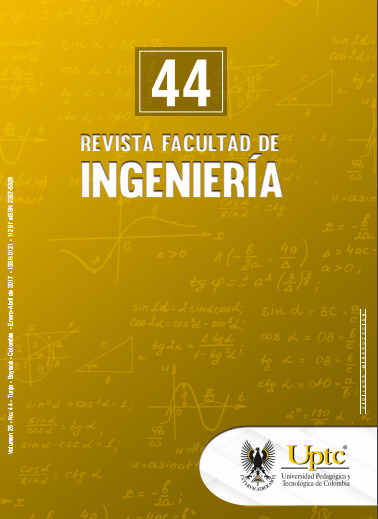Detection of lies by facial thermal imagery analysis

Abstract
An artificial vision system is presented for lie detection by analyzing face thermal image sequences. This system represents an alternative technique to the polygraph. Some of its features are: 1) it has no physical contact with the examinee, 2) it is non-intrusive, 3) it has a potential for private use, and 4) it can simultaneously analyze several persons. The proposed system is based on the detection of physiological changes in temperature in the lacrimal puncta area caused by the subtle increase in blood flow through the nearby vascular network. These changes take place when anxiety appears as a consequence of deception. Thus, the system segments the periorbital area, and tracks consecutive frames using the Kanade-Lucas-Tomasi algorithm. The results show a success rate of 79.2 % in detecting lies using a simple classification based on the comparison between the estimated temperatures in control questions, and the rest of the interrogation procedure. The performance of this system is comparable with previous works, where cameras with better specifications were used.
Keywords
face anthropometric measurements, KLT algorithm, lie detection, periorbital area, thermography
References
- J. Yuille, Credibility Assessment. Dordrecht, The Netherlands: Kluwer Academic Publishers, 1989. DOI: http://doi.org/10.1007/978-94-015-7856-1. DOI: https://doi.org/10.1007/978-94-015-7856-1
- H. D. Benítez-Restrepo, H. Loaiza-Correa, and E. Caicedo-Bravo, Termografía activa pulsada en inspección de materiales. Técnicas Avanzadas de Procesado. Cali, Colombia: Universidad del Valle / Universidad Javeriana, 2011.
- B. B. Lahiri, S. Bagavathiappan, T. Jayakumar, and J. Philip, “Medical applications of infrared thermography: a review,” Infrared Physics & Technology, vol. 55(4), pp. 221-235, Jul. 2012. DOI: http://doi.org/10.1016/j.infrared.2012.03.007. DOI: https://doi.org/10.1016/j.infrared.2012.03.007
- I. Fujimasa, T. Chinzei, and I. Saito, “Converting Far Infrared Image Information to Other Physiological Data,” IEEE Eng. Med. Biol. Mag., vol. 19(3), pp. 71-76, May. 2000. DOI: http://doi.org/10.1109/51.844383. DOI: https://doi.org/10.1109/51.844383
- M. Garbey, A. Merla, and I. Pavlidis, “Estimation of blood flow speed and vessel location from thermal video,” in Proc. 2004 IEEE Computer Society Conf. Computer Vision and Pattern Recognition Conf., Washington D.C., Jul. 2004, vol. 1, pp. 356-363. DOI: http://doi.org/10.1109/cvpr.2004.1315054. DOI: https://doi.org/10.1109/CVPR.2004.1315054
- M. Garbey, N. Sun, A. Merla, and I. Pavlidis, “Contact-free measurement of cardiac pulse based on the analysis of thermal imagery,” IEEE Trans. Biomed. Eng., vol. 54(8), pp. 1418-1426, Aug. 2007. DOI: http://doi.org/10.1109/TBME.2007.891930. DOI: https://doi.org/10.1109/TBME.2007.891930
- I. Pavlidis, J. Levine, and P. Baukol, “Thermal imaging for anxiety detection,” in Proc. IEEE Workshop on Comput. Vis. beyond the Visible
- Spectrum: Methods Appl., Hilton Head, SC, 2000, pp. 104-109. DOI: http://doi.org/10.1109/CVBVS.2000.855255. DOI: https://doi.org/10.1109/CVBVS.2000.855255
- Z. Zhu, P. Tsiamyrtzis, and I. Pavlidis, “Forehead thermal signature extraction in lie detection,” in Proc. Annu. Int. Conf. IEEE Engineering in Medicine and Biology Society, Paris, France, 2007, pp. 243-246. DOI: http://doi.org/10.1109/iembs.2007.4352269. DOI: https://doi.org/10.1109/IEMBS.2007.4352269
- U. Jain, B. Tan, and Q. Li, “Concealed knowledge identification using facial thermal imaging,” in Proc. IEEE Int. Conf. Acoustics, Speech and Signal Processing (ICASSP), Kyoto, Japan, 2012, pp. 1677-1680. DOI: http://doi.org/10.1109/icassp.2012.6288219. DOI: https://doi.org/10.1109/ICASSP.2012.6288219
- I. Pavlidis and J. Levine, “Thermal image analysis for polygraph testing,” IEEE Eng. Med. Biol. Mag., vol. 21(6), pp. 56-64, Nov. 2002. DOI: http://doi.org/10.1109/MEMB.2002.1175139. DOI: https://doi.org/10.1109/MEMB.2002.1175139
- M. Owayjan, A. Kashour, N. Al Haddad, M. Fadel, and G. Al Souki, “The design and development of a Lie Detection System using facial micro-expressions,” in 2nd Int. Conf. Advances in Computational Tools for Engineering Applications, Beirut, Lebanon, 2012, pp. 33-38. DOI: http://doi.org/10.1109/ictea.2012.6462897. DOI: https://doi.org/10.1109/ICTEA.2012.6462897
- J. Gao, N. Rao, Y. Yang, and W. Wei, “A New Lie Detection Method Based on Small-number of P300 Responses,” in Int. Conf. Biomedical Engineering and Biotechnology, Macau, China, 2012, pp. 662–665. DOI: http://doi.org/10.1109/icbeb.2012.31. DOI: https://doi.org/10.1109/iCBEB.2012.31
- Y. Xiong, Y. Luo, W. Huang, W. Zhang, Y. Yang, and J. Gao, “A novel classification method based on ICA and ELM: a case study in lie detection,” Bio-Medical Materials and Engineering, vol. 24(1), pp. 357-63, 2014. DOI: http://doi.org/10.3233/BME-130818. DOI: https://doi.org/10.3233/BME-130818
- S. Corral, J. Otero, A. Barrenetxea, and O. Landeta, “Información y Test de Conocimiento Culpable en la Detección del Engaño,” Psicológica, vol. 19(3), pp. 187-200, 1998.
- I. Pavlidis and J. Levine, “Monitoring of periorbital blood flow rate through thermal image analysis and its application to polygraph testing,” in Proc. 23rd Annu. Int. Conf. IEEE Engineering in Medicine and Biology, Istanbul (Turkey), Oct. 2001, vol. 3, pp. 2826-2829. DOI: http://doi.org/10.1109/iembs.2001.1017374. DOI: https://doi.org/10.1109/IEMBS.2001.1017374
- X. Xu, S. Xu, L. Jin, and E. Song, “Characteristic analysis of Otsu threshold and its applications,” Pattern Recognition Letters, vol. 32(7), pp. 956-961, May. 2011. DOI: http://doi.org/10.1016/j.patrec.2011.01.021. DOI: https://doi.org/10.1016/j.patrec.2011.01.021
- C. Tomasi and T. Kanade, “Detection and Tracking of Point Features,” Carnegie Mellon Univ, PA, Tech Rep. CMU-CS-91-132, Apr. 1991.
- J. Shi and C. Tomasi, “Good Features to Track,” in Proc. IEEE Conf. Computer Vision and Pattern Recognition, Seattle, WA, Jun. 1994 pp. 593-600.
- D. Otero, Fusión de secuencias de vídeo de alta velocidad procedentes de cámaras desplazadas espacial o temporalmente, undergraduate project, Escuela Politécnica Superior, Univ. Autónoma de Madrid. Madrid, España, 2010.
- M. Zamorano, “Análisis de señales mediante STFT y Wavelet. Aplicación a defectología en rodamientos,” undergraduate project, Departamento de Ingeniería Mecánica, Universidad Carlos III de Madrid, 2010.
- M. Misiti, Y. Misiti, G. Oppenheim, and J. M. Poggi, Wavelet toolboxTM. User´s Guide. Natick, MA: The MathWorks Inc., 1996.
- D. Shastri, P. Tsiamyrtzis, and I. Pavlidis, “Periorbital thermal signal extraction and applications,” in Proc. Annu. Int. Conf. IEEE Engineering in Medicine and Biology Society, Vancouver, Canada, 2008, pp. 102-5. DOI: http://doi.org/10.1109/iembs.2008.4649101. DOI: https://doi.org/10.1109/IEMBS.2008.4649101
- P. Buddharaju, J. Dowdall, P. Tsiamyrtzis, D. Shastri, I. Pavlidis, and M. G. Frank, “Automatic thermal monitoring system (ATHEMOS) for deception detection,” in IEEE Computer Society Conf. Computer Vision and Pattern Recognition (CVPR’05), San Diego, CA, 2005, vol. 2, pp. 1179-1179. DOI: http://doi.org/10.1109/cvpr.2005.82. DOI: https://doi.org/10.1109/CVPR.2005.82
- H. Belalcázar and S. Bedoya, Detección de Mentiras por Análisis de Imágenes Térmicas de Rostros, undergraduate project, Escuela de Ingeniería Eléctrica y Electrónica, Univ. del Valle. Cali, Colombia, 2015.